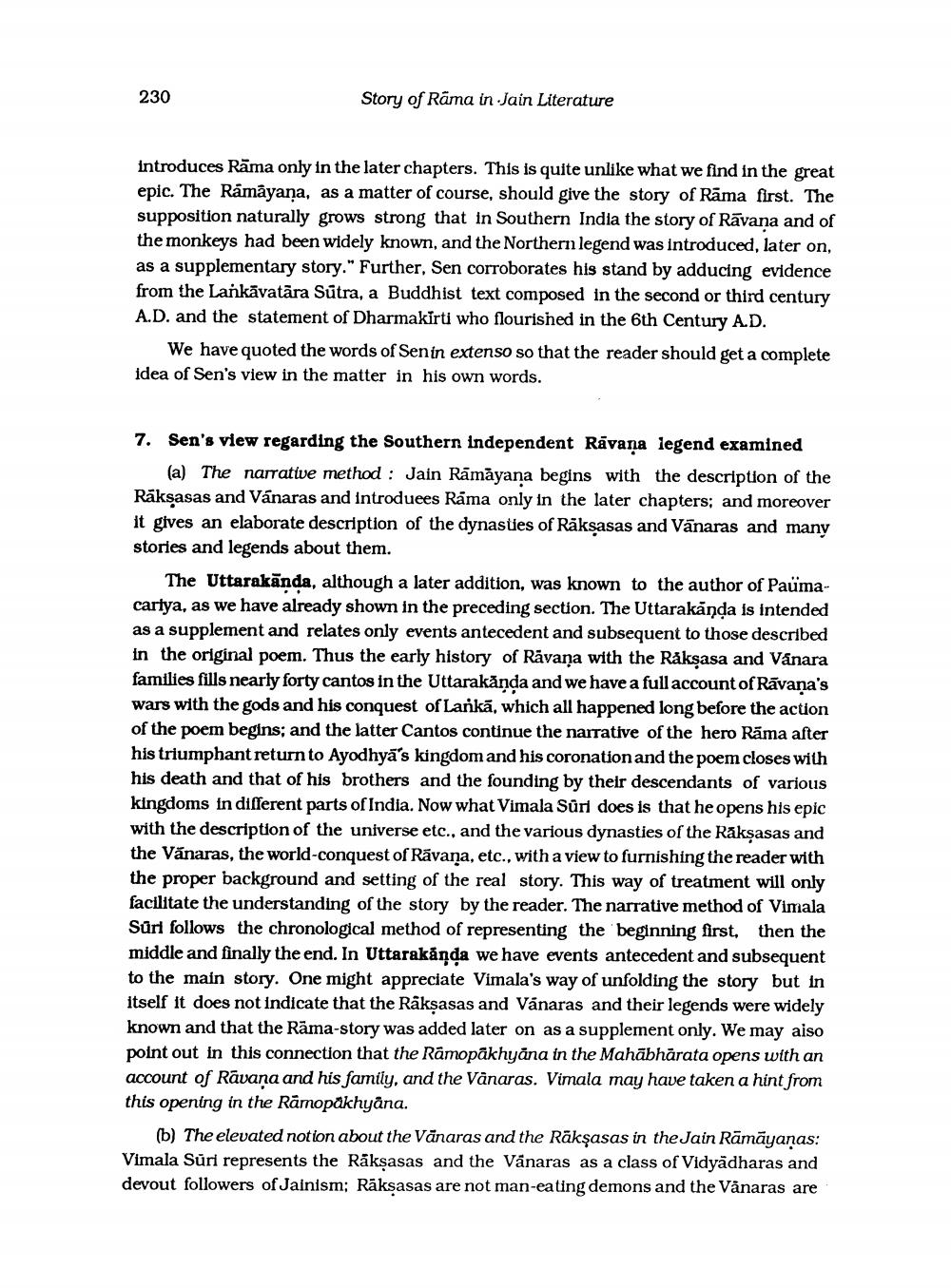________________
230
Story of Rama in Jain Literature
introduces Rāma only in the later chapters. This is quite unlike what we find in the great epic. The Ramayana, as a matter of course, should give the story of Rāma first. The supposition naturally grows strong that in Southern India the story of Rāvana and of the monkeys had been widely known, and the Northern legend was introduced, later on, as a supplementary story." Further, Sen corroborates his stand by adducing evidence from the Lankāvatāra Sūtra, a Buddhist text composed in the second or third century A.D. and the statement of Dharmakirti who flourished in the 6th Century A.D.
We have quoted the words of Senin extenso so that the reader should get a complete idea of Sen's view in the matter in his own words.
7. Sen's view regarding the Southern Independent Rāvana legend examined
(a) The narrative method : Jain Rāmāyana begins with the description of the Raksasas and Vánaras and introduees Rama only in the later chapters, and moreover it gives an elaborate description of the dynasties of Räksasas and Vānaras and many stories and legends about them.
The Uttarakānda, although a later addition, was known to the author of Paümacarlya, as we have already shown in the preceding section. The Uttarakanda is intended as a supplement and relates only events antecedent and subsequent to those described in the original poem. Thus the early history of Rävaņa with the Räksasa and Vanara families fills nearly forty cantos in the Uttarakānda and we have a full account of Rāvana's wars with the gods and his conquest of Lankā, which all happened long before the action of the poem begins; and the latter Cantos continue the narrative of the hero Rāma after his triumphant return to Ayodhya's kingdom and his coronation and the poem closes with his death and that of his brothers and the founding by their descendants of various kingdoms in different parts of India. Now what Vimala Sûri does is that he opens his epic with the description of the universe etc., and the various dynasties of the Rakşasas and the Vanaras, the world-conquest of Rāvana, etc., with a view to furnishing the reader with the proper background and setting of the real story. This way of treatment will only facilitate the understanding of the story by the reader. The narrative method of Vimala Sūri follows the chronological method of representing the beginning first, then the middle and finally the end. In Uttarakānda we have events antecedent and subsequent to the main story. One might appreciate Vimala's way of unfolding the story but in itself it does not indicate that the Raksasas and Vanaras and their legends were widely known and that the Rāma-story was added later on as a supplement only. We may also point out in this connection that the Ramopākhyāna in the Mahābhārata opens with an account of Rāvana and his family, and the Vanaras. Vimala may have taken a hint from this opening in the Rāmopakhyana.
(b) The elevated notion about the Vānaras and the Rākşasas in the Jain Rāmāyanas: Vimala Sūri represents the Rakşasas and the Vanaras as a class of Vidyadharas and devout followers of Jainism; Raksasas are not man-eating demons and the Vanaras are




